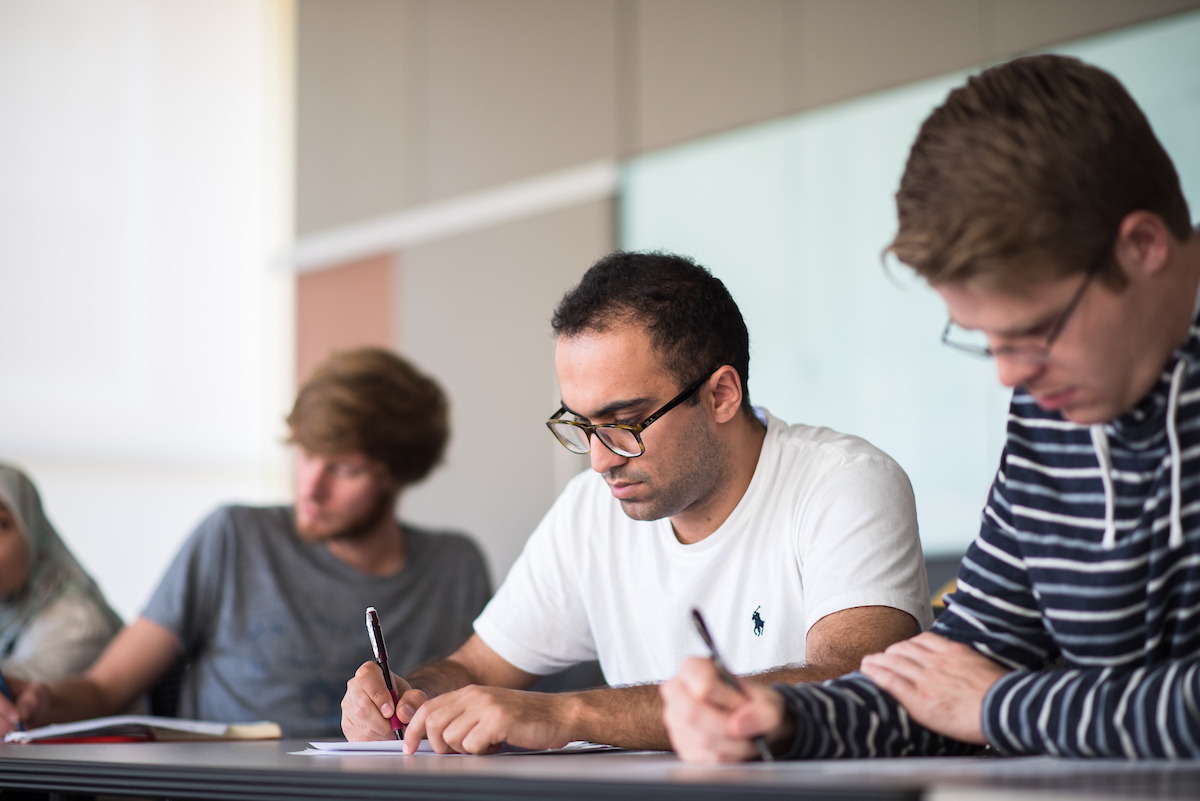ASSESSMENT TECHNIQUES

There are many approaches you can take to design feedback you will give to students. These resources offer techniques to help implement a variety of assessments —
Providing Feedback to Learners
One key purpose of assessment is to provide feedback that students can use to adjust their study techniques and learning processes —
- Seven Keys to Effective Feedback (Association for Supervision and Curriculum Development)
- Giving Student Feedback: 20 Tips To Do It Right (InformED)
In-class Assessment Techniques
In the classroom there are many ways to improve students learning through assessment activities. These can provide students with feedback about their learning, and give faculty feedback about the class.
- Classroom Assessment Techniques (Teaching@Tufts)
- Classroom Assessment Techniques (CATs) (Vanderbilt)
- Using Classroom Assessment Data to Improve Student Learning (Teaching@Tufts)
Assignments
Out-of-class work is a common way to scaffold student learning. Here are some approaches to consider when designing assignments.
- Equitable Assignment Design (Tufts)
- Inclusive Assessment: Equal or Equitable (Tufts)
- The Fall and Rise of Reading (Chronicle of Higher Education)
Creative Assessments
As AI continues to interrupt our written assignments, some approaches involve thinking creatively about the experiences of our students in our assessments. Consider alternative models for students to express their learning, such as conference posters, information graphics, podcasts, maps, artwork, storyboards, song writing, poetry, or research presentations. These creative expressions build on universal design for learning core principle, “Providing Multiple Means of Expression, which increases equity in the classroom.
- Creative Assessment Guide from Tisch Tish Library
- Examples of Creative Assessments from Tisch Library
- Creating Epic Finales or Limping Across the Finish Line (Teaching@Tufts)
Testing & Test Design
Testing can function in different ways in the classroom. Low-stakes quizzes and tests can provide students with feedback on their learning throughout a course. Final exams, on the other hand, provide an assessment of the student’s level of achievement of the larger course learning objectives.
Tests are also an opportunity for students to consolidate their learning and integrate new ideas with their existing knowledge. Careful design of test questions can maximize student learning opportunities, while adhering to the constraints of course resources and instructor time.
- Exams: Maximizing Their Learning Potential (Faculty Focus)
- How can we get students to learn more from tests? (Tufts Faculty Blog)
- Best Practices for Designing and Grading Exams (University of Michigan)
- Crafting Questions (Western Washington University)
Assessing Group Work
Group work may be graded or not. When ungraded, group work is still effective as an assessment approach, because students get feedback about their own learning in the context of the group activities.
- Assessing Group Work (Teaching@Tufts)
- Methods for Assessing Group Work (University of Waterloo)
Peer Feedback Among Students
Creating opportunities for peer feedback helps students understand how to receive feedback from multiple perspectives, and learn from each others ideas.
- Designing Peer Feedback (Teaching@Tufts)
- Frame Your Feedback: Making Peer Review work in Class (Faculty Focus)
Student Self-Assessments
Self-assessment becomes sustainable when it builds the student’s ongoing ability to evaluate their own learning, and improve their work. These techniques support sustainable assessment:
- Self-Evaluation of Individual Contributions During Discussion (Teaching@Tufts)
- Inclusive Participation Assessment Rubric (Tufts)
- Student Self-Assessment Making Standards Come Alive (ASCD)
- Critical Reflection (University of Waterloo)
See More
- Strategies and Resources for Fair and Efficient Grading
- Whys and Hows of Rubrics
- Recent Blog Posts about assessment on Teaching@Tufts
- What are inclusive assessment practices?
- Index of Teaching Technologies – includes assessment technology recommendations
